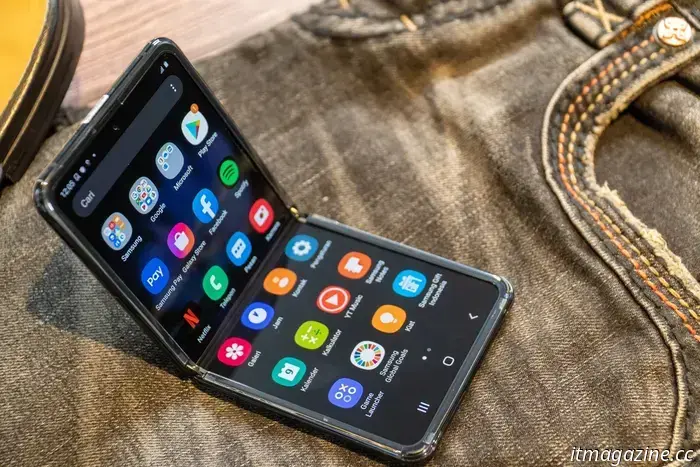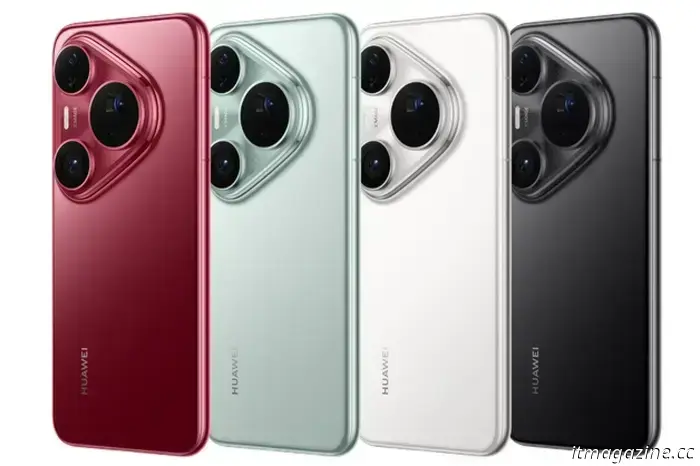
Samsung introduced a foldable smartphone series in an effort to remain a leader.
Samsung introduced three new foldable smartphones — the Galaxy Z Fold 7, Galaxy Z Flip 7, and a more budget-friendly Galaxy Z Flip 7 FE. The company is clearly trying to take the lead from Chinese manufacturers, who have strengthened their positions significantly in recent years.
Despite the impressive specifications of the new models, maintaining dominance will be challenging. Samsung's share of the global foldable device market has already decreased from 54% to 45%, while Chinese brands like Honor and Oppo are actively catching up by offering thinner, more powerful, and more affordable models.
Race for Thickness and Weight
The flagship Galaxy Z Fold 7 has become one of the thinnest and lightest smartphones in its class. When closed, its thickness is just 8.9 mm, and when unfolded — a record 4.2 mm. In comparison, the previous Fold 6 was nearly a millimeter thicker. The weight has also decreased to 215 grams, making the device more convenient for everyday use. In these aspects, Samsung has nearly matched Chinese competitors such as Honor Magic V5 and Oppo Find N5, which also focus on minimalist design.
The display has also grown — to 6.5 inches outside and 8 inches inside. This improves multitasking, especially when working with multiple apps simultaneously. The cameras received a major upgrade: the main camera now has 200 MP, along with a 10 MP telephoto lens and a 12 MP ultra-wide. The front cameras (both 10 MP) are located on both the exterior and interior screens.
However, there is a weak spot — the battery. Its capacity (4400 mAh) is noticeably lower than competitors. For example, Honor Magic V5 has a 6100 mAh battery, and Oppo Find N5 — 5600 mAh. Samsung assures that energy optimization allows the new Fold 7 to operate up to 24 hours in video mode, but in real-world conditions, especially with active camera use and multi-window mode, battery life could become a concern.
Evolution Instead of Revolution
The Galaxy Z Flip 7 flip-phone has also become thinner — 6.5 mm unfolded compared to 6.9 mm on the previous model. The main screen has grown to 6.9 inches, while the external display remains at 4.1 inches. The cameras have received a modest upgrade: the main sensor is now 50 MP (versus 12 MP on Flip 6), while the ultra-wide remains at 12 MP. The front camera on the inner screen is 10 MP.
The battery increased to 4300 mAh (up from 3700 mAh on Flip 6), which Samsung claims will provide up to 31 hours of video playback. This is a significant improvement, considering that battery life has always been a weak spot for flip phones.
For those unwilling to pay extra for the premium model, the company offers the Galaxy Z Flip 7 FE. It is slightly thicker and more compact but retains key features, including improved cameras and a larger battery. The starting price in the UK is £849 compared to £1049 for the standard Flip 7, making it more attractive to the mass market.
Artificial Intelligence as a Main Advantage
Samsung is making a serious bet on AI to stand out among competitors. Both new models run on the Snapdragon 8 Elite chip, developed jointly with Qualcomm. Its key feature is the ability to process AI tasks directly on the device without sending data to the cloud. This not only speeds up operation but also enhances privacy.
Among new features are automatic detection of extraneous objects in photos (e.g., accidental people in the shot) and noise removal in videos. But the most unusual feature is the integration with Gemini Live in the Galaxy Z Flip 7. Users can receive real-time AI tips — for example, asking how their outfit matches during filming.
What Will Happen to the Foldable Smartphone Market?
Analysts note that Samsung currently maintains its leadership, but its position is no longer as secure as before. Chinese brands are actively developing foldable devices, offering larger batteries, slim designs, and aggressive pricing. At the same time, the key factor in choosing is not only the hardware but also how companies use flexible screens to create fundamentally new software.
While Samsung is betting on slimness and AI, this may not be enough in the long run. If the company does not introduce truly innovative features, its market share will continue to decline. However, with the new cameras, improved battery life, and the more affordable Flip 7 FE, Samsung still has a chance to reverse the trend. The main question is whether the new models can outweigh the growing popularity of Chinese alternatives.



Samsung introduced a foldable smartphone series in an effort to remain a leader.
Samsung introduced three new foldable smartphones—Galaxy Z Fold 7, Galaxy Z Flip 7, and the more budget-friendly Galaxy Z Flip 7 FE. The company is clearly trying to take the initiative from Chinese manufacturers who have significantly strengthened their positions in recent years.

